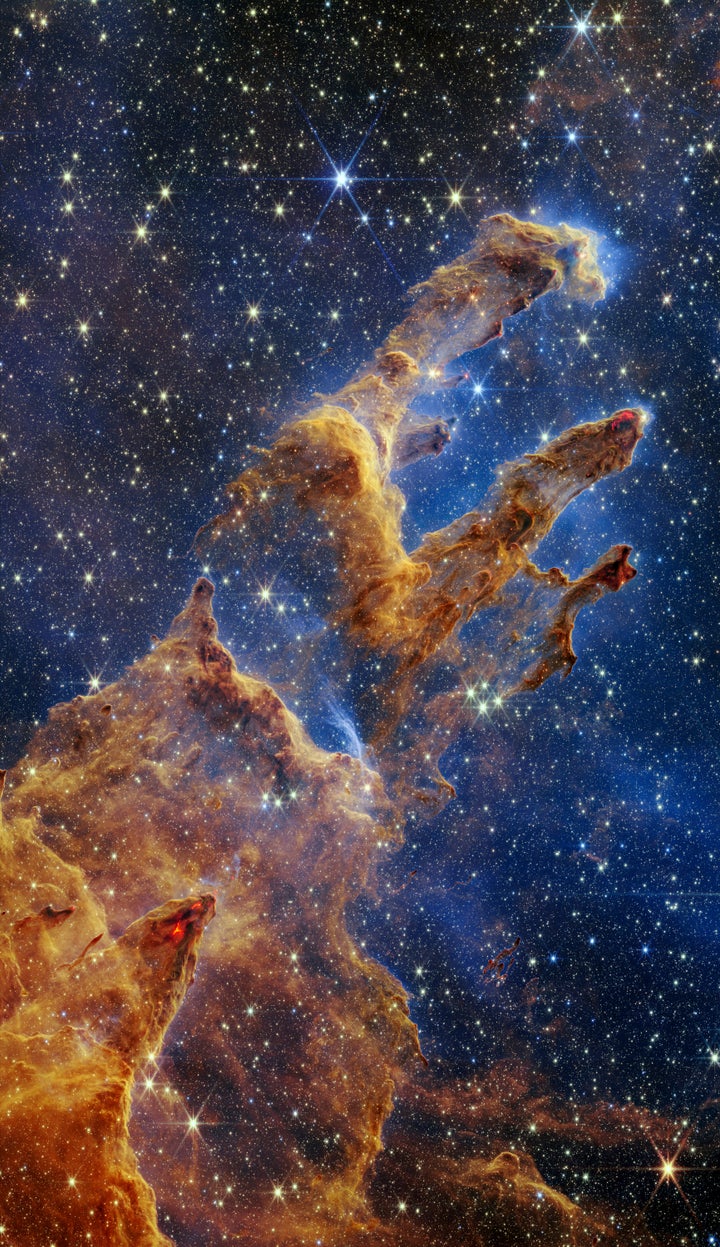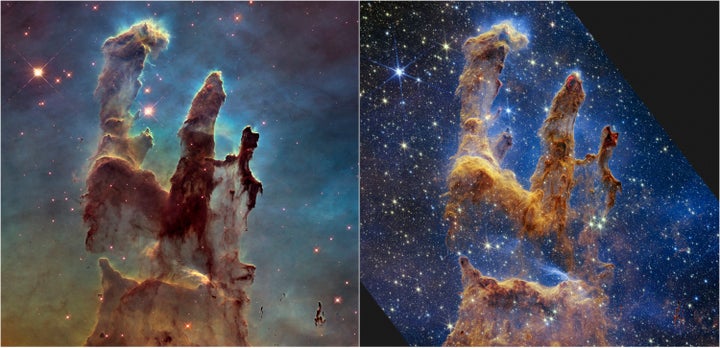NASA released a new image of the iconic Pillars of Creation on Wednesday, an updated and intricate view showcasing the far-reaching power of the James Webb Space Telescope.
“The three-dimensional pillars look like majestic rock formations, but are far more permeable,” NASA wrote. “These columns are made up of cool interstellar gas and dust that appear – at times – semi-transparent in near-infrared light.”
The image was captured with Webb’s Near-Infrared Camera, or NIRCam.
The region lies about 6,500 light-years away within the Eagle Nebula, and was first captured by the Hubble telescope in 1995 and again in 2014. The latest image, however, adds striking new detail: Bright red orbs are newly-formed stars, thought to be just a few hundred thousand years old. Wavy lines that look like lava on the edge of some pillars are ejections from stars that are still forming.
“When knots with sufficient mass form within the pillars of gas and dust, they begin to collapse under their own gravity, slowly heat up, and eventually form new stars,” NASA said. “Young stars periodically shoot out supersonic jets that collide with clouds of material, like these thick pillars … The crimson glow comes from the energetic hydrogen molecules that result from jets and shocks. This is evident in the second and third pillars from the top – the NIRCam image is practically pulsing with their activity.”

The latest image doesn’t show any distant galaxies, unlike other shots from the James Webb telescope. NASA said a mix of translucent gas and dust called the interstellar medium sits in the Milky Way galaxy.
NASA said the new view of the Pillars of Creation will help scientists revamp models of star formation and, over time, allow astronomers to build “a clearer understanding of how stars form and burst out of these dusty clouds over millions of years.”

The image is the latest in a slew of awe-striking shots released by NASA in recent months. The space agency has published shots of the Cartwheel Galaxy, about 500 million light-years from Earth, photos of Neptune and its rings, and images that let humanity view the earliest days of the universe.
The side-by-side shot released by NASA of the Pillars Wednesday shows the sheer power of the $10 billion project.
“By popular demand, we had to do the Pillars of Creation with #JWST,” Klaus Pontoppidan, an astronomer on the James Webb project, wrote on Twitter. “The nebula, M16, is located right in the plane of the Milky Way; there are just so many stars!”
